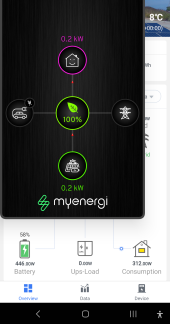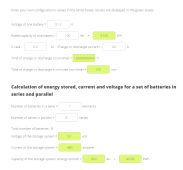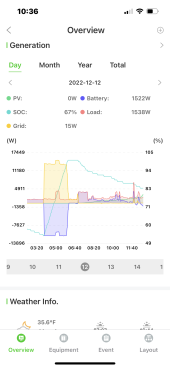Mendoza333
New Member
- Joined
- Dec 3, 2022
- Messages
- 4
Hi all,
New here on the forum. But keen to contribute.
I've recently had my setup and do have some anomalies.
First setup details:
31 x 660watt panels facing East and West over four mttps (20kw)
31 optimisers on each panel
2 x deye 8k hybrid inverter
8 x 5Kwh Li battery in parralel (40kwh)
Installed on single phase with 100 amp fuse
So first of all. Everything is working fine. However I am struggling to understand the following
1. CT Clamp on the deye inverter connected to the mains cable just after the main meter. Now I am noticing that the battery is always draining more than the consumption for the house. For example, the house consumption is showing 0.5kwh, battery shows 0.69 kwh drain. Its always around 100-190 watt more than the drain. However if I force the system to draw from the grid. The Consumption of the house and the draw from the grid is always equal
2- is it normal for the system to randomly pull 0.1-0.2kwh watt from the grid even if the battery / solar is supplying the full consumption needed. It goes on and off. Not a big deal just a bit weired.
3- one time the system started drawing from the grid while battery showing soc of 59%. When I accessed the bms details, found that the bms shoes a message "force reachrge request" but there was no error codes. Noting the voltage was 51v so it hasn't dropped under 50v .I've deactivated the battery and activated it again, and it continued drawing from the battery as normal.
FInal query:
My plan is to charge the cars and battery at night. And I am wondering whats the best way to get the cars to charge and the batteries aswell at night, while not forcing the inverter to drain the battery to the cars. I do have two car chargers. A zappi and a tesla charger. Zappi ct clamp connected to the mains before the consumer unit, and after the isolator of the Inverter so I am able to monitor the inverter output and grid from the app. Tesla there is no ct clamp feature so it's not connected to anything.
At first I thought I would just set the inverter to charge the battery the same time as the cars and rely on the zappi to reduce its draw so it doesn't max the network (since it has a ct clamp on the grid and setup to max 80 amp draw). But I am unsure if there is a better way!
Hope this make sense. Appreciate your thoughts!
Some settings attached
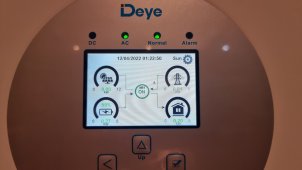
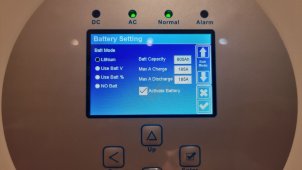


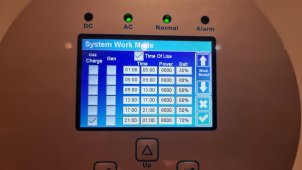
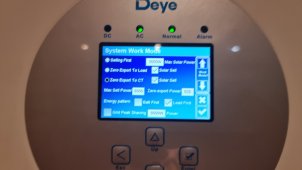

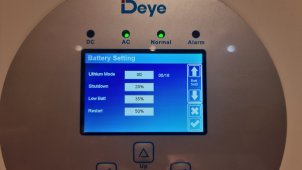
New here on the forum. But keen to contribute.
I've recently had my setup and do have some anomalies.
First setup details:
31 x 660watt panels facing East and West over four mttps (20kw)
31 optimisers on each panel
2 x deye 8k hybrid inverter
8 x 5Kwh Li battery in parralel (40kwh)
Installed on single phase with 100 amp fuse
So first of all. Everything is working fine. However I am struggling to understand the following
1. CT Clamp on the deye inverter connected to the mains cable just after the main meter. Now I am noticing that the battery is always draining more than the consumption for the house. For example, the house consumption is showing 0.5kwh, battery shows 0.69 kwh drain. Its always around 100-190 watt more than the drain. However if I force the system to draw from the grid. The Consumption of the house and the draw from the grid is always equal
2- is it normal for the system to randomly pull 0.1-0.2kwh watt from the grid even if the battery / solar is supplying the full consumption needed. It goes on and off. Not a big deal just a bit weired.
3- one time the system started drawing from the grid while battery showing soc of 59%. When I accessed the bms details, found that the bms shoes a message "force reachrge request" but there was no error codes. Noting the voltage was 51v so it hasn't dropped under 50v .I've deactivated the battery and activated it again, and it continued drawing from the battery as normal.
FInal query:
My plan is to charge the cars and battery at night. And I am wondering whats the best way to get the cars to charge and the batteries aswell at night, while not forcing the inverter to drain the battery to the cars. I do have two car chargers. A zappi and a tesla charger. Zappi ct clamp connected to the mains before the consumer unit, and after the isolator of the Inverter so I am able to monitor the inverter output and grid from the app. Tesla there is no ct clamp feature so it's not connected to anything.
At first I thought I would just set the inverter to charge the battery the same time as the cars and rely on the zappi to reduce its draw so it doesn't max the network (since it has a ct clamp on the grid and setup to max 80 amp draw). But I am unsure if there is a better way!
Hope this make sense. Appreciate your thoughts!
Some settings attached








Last edited:



